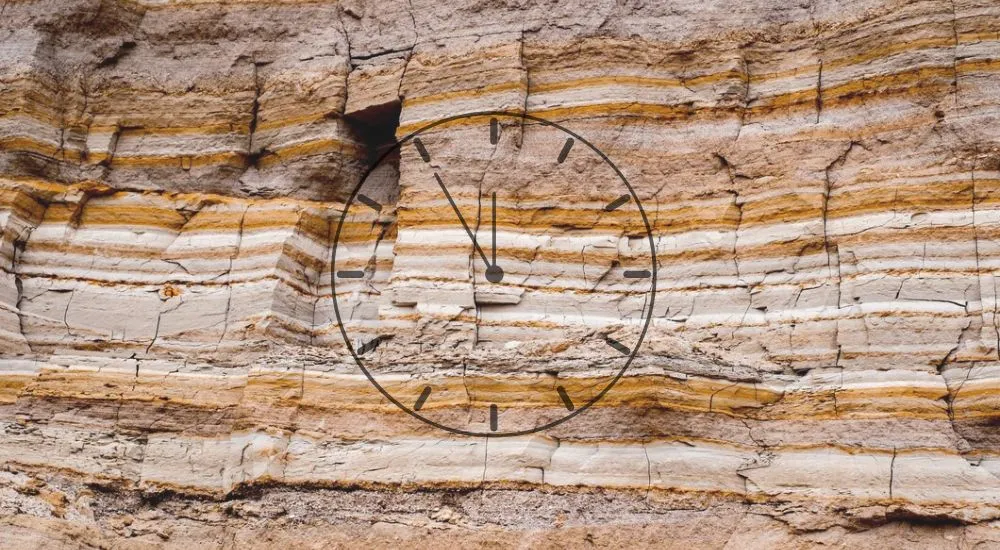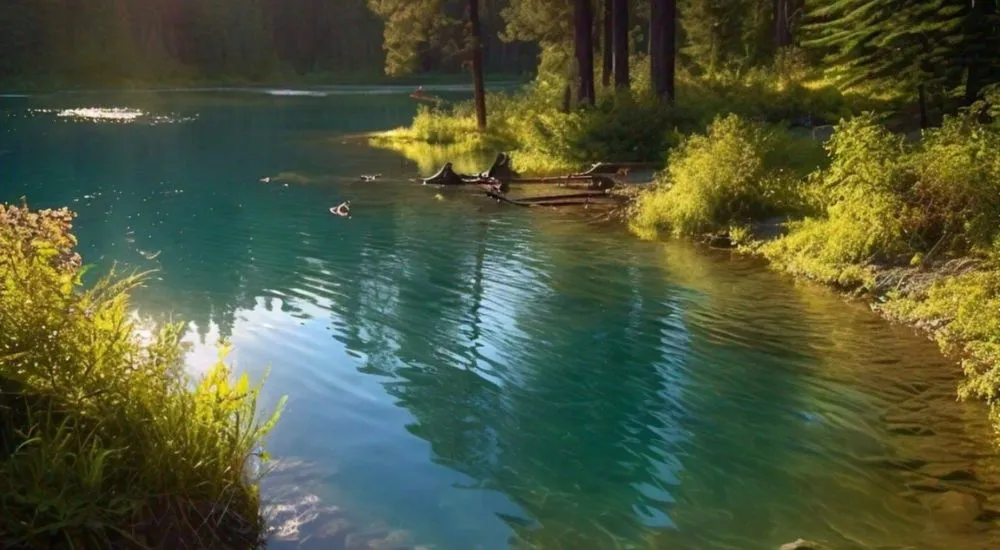The Geological Time Scale (or Geochronological Scale) offers a captivating journey through Earth’s ancient history. Organized into eons, eras, periods, epochs, and ages, it spans billions of years, mapping significant geological events and the evolution of life. From the emergence of early rocks to the rise of complex organisms, this concise guide offers a glimpse into Earth’s ever-changing past.
1. The Geological Time Scale is a system used to:
(A) Determine the age of rocks
(B) Describe the history of life on Earth
(C) Measure the rate of erosion
(D) Calculate the distance between tectonic plates
(B) Describe the history of life on Earth
Explanation: The Geological Time Scale is primarily used to divide Earth’s history into distinct intervals and describe the evolution of life forms that have existed on Earth.
2. Which era is known as the “Age of Reptiles”?
(A) Paleozoic Era
(B) Mesozoic Era
(C) Cenozoic Era
(D) Precambrian Era
(B) Mesozoic Era
Explanation: The Mesozoic Era, which lasted from approximately 252 to 66 million years ago, is often referred to as the “Age of Reptiles” because it witnessed the dominance and diversification of reptiles, including dinosaurs.
3. Which epoch is characterized by the appearance of early primates?
(A) Pleistocene Epoch
(B) Pliocene Epoch
(C) Eocene Epoch
(D) Miocene Epoch
(C) Eocene Epoch
Explanation: The Eocene Epoch, which occurred between 56 and 33.9 million years ago, is known for the emergence of early primates, such as the ancestors of lemurs and tarsiers.
4. The boundary between the Cretaceous and Paleogene periods is marked by:
(A) The extinction of the dinosaurs
(B) The first appearance of flowering plants
(C) The formation of the Appalachian Mountains
(D) The separation of Pangaea
(A) The extinction of the dinosaurs
Explanation: The boundary between the Cretaceous and Paleogene periods, known as the K-Pg boundary, is defined by a mass extinction event that led to the extinction of the dinosaurs and many other species.
5. The longest division of geological time is:
(A) Eon
(B) Era
(C) Period
(D) Epoch
(A) Eon
Explanation: An eon is the largest division of geological time. It represents a major span of Earth’s history and is subdivided into eras, periods, and epochs.
6. The Cambrian Explosion refers to:
(A) A sudden increase in volcanic activity
(B) The appearance of the first multicellular organisms
(C) The formation of the Grand Canyon
(D) The movement of tectonic plates
(B) The appearance of the first multicellular organisms
Explanation: The Cambrian Explosion, which occurred around 541 million years ago, refers to a rapid diversification and appearance of various complex multicellular organisms in the fossil record.
7. The Quaternary Period is characterized by:
(A) The diversification of mammals
(B) The formation of the Rocky Mountains
(C) The first appearance of dinosaurs
(D) The development of agriculture
(A) The diversification of mammals
Explanation: The Quaternary Period, which began approximately 2.6 million years ago and continues to the present, is characterized by the diversification and success of mammals, including humans.
8. The boundary between the Paleozoic and Mesozoic eras is marked by:
(A) The extinction of the dinosaurs
(B) The first appearance of flowering plants
(C) The formation of the Appalachian Mountains
(D) The Permian-Triassic mass extinction
(D) The Permian-Triassic mass extinction
Explanation: The boundary between the Paleozoic and Mesozoic eras is defined by the Permian-Triassic mass extinction, which was one of the most significant extinction events in Earth’s history, resulting in the loss of about 96% of marine species.
9. The Proterozoic Eon is known for the development of:
(A) Complex life forms
(B) Single-celled organisms
(C) Dinosaurs
(D) Continental drift
(A) Complex life forms
Explanation: The Proterozoic Eon, which spanned from approximately 2.5 billion to 541 million years ago, witnessed the emergence and diversification of complex life forms, including the first multicellular organisms.
10. The Precambrian Era represents approximately what percentage of Earth’s history?
(A) 10%
(B) 25%
(C) 75%
(D) 90%
(D) 90%
Explanation: The Precambrian Era encompasses the vast majority of Earth’s history, representing about 90% of the geological time scale, extending from the formation of Earth around 4.6 billion years ago to the beginning of the Cambrian Period.
11. The formation of the Himalayan Mountain range occurred during which era?
(A) Paleozoic Era
(B) Mesozoic Era
(C) Cenozoic Era
(D) Precambrian Era
(C) Cenozoic Era
Explanation: The formation of the Himalayan mountain range took place during the Cenozoic Era, specifically in the Tertiary Period.
12.The first appearance of abundant complex life forms, including trilobites, occurred in which era?
(A) Paleozoic Era
(B) Mesozoic Era
(C) Cenozoic Era
(D) Precambrian Era
(A) Paleozoic Era
Explanation: The first appearance of abundant complex life forms, including trilobites, is characteristic of the Paleozoic Era.
13. The “Great Oxidation Event,” marked by the rise of atmospheric oxygen, occurred during which eon?
(a) Hadean Eon
(B) Archean Eon
(C) Proterozoic Eon
(D) Phanerozoic Eon
(B) Archean Eon
Explanation: The “Great Oxidation Event” occurred during the Archean Eon, leading to the rise of atmospheric oxygen.
14. The extinction of the non-avian dinosaurs occurred at the end of which period?
(A) Jurassic Period
(B) Cretaceous Period
(C) Triassic Period
(D) Permian Period
(B) Cretaceous Period
Explanation: The extinction of the non-avian dinosaurs occurred at the end of the Cretaceous Period, precisely at the Cretaceous-Paleogene (K-Pg) boundary.
15. The “Ice Age” that occurred approximately 2.6 million years ago is part of which period?
(A) Holocene Epoch
(B) Pleistocene Epoch
(C) Pliocene Epoch
(D) Miocene Epoch
(B) Pleistocene Epoch
Explanation: The “Ice Age” that occurred approximately 2.6 million years ago is part of the Pleistocene Epoch.











3 Comments
Please send me the all geology notes and questions and answers ….. please
Please be connected with GEOexams to get the study materials.
Please send all notes and questions and answers about geology